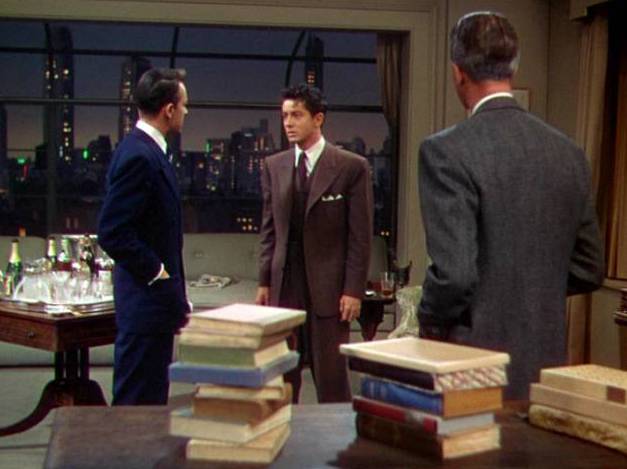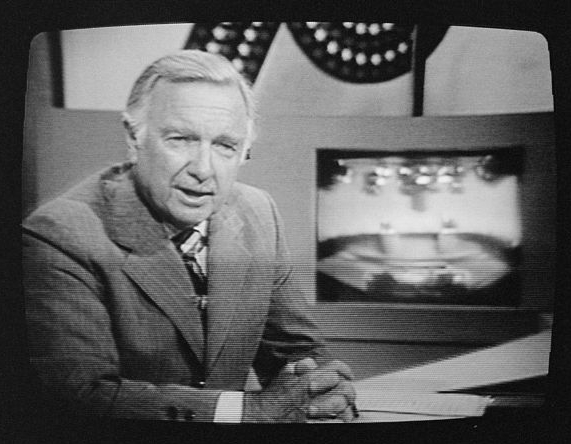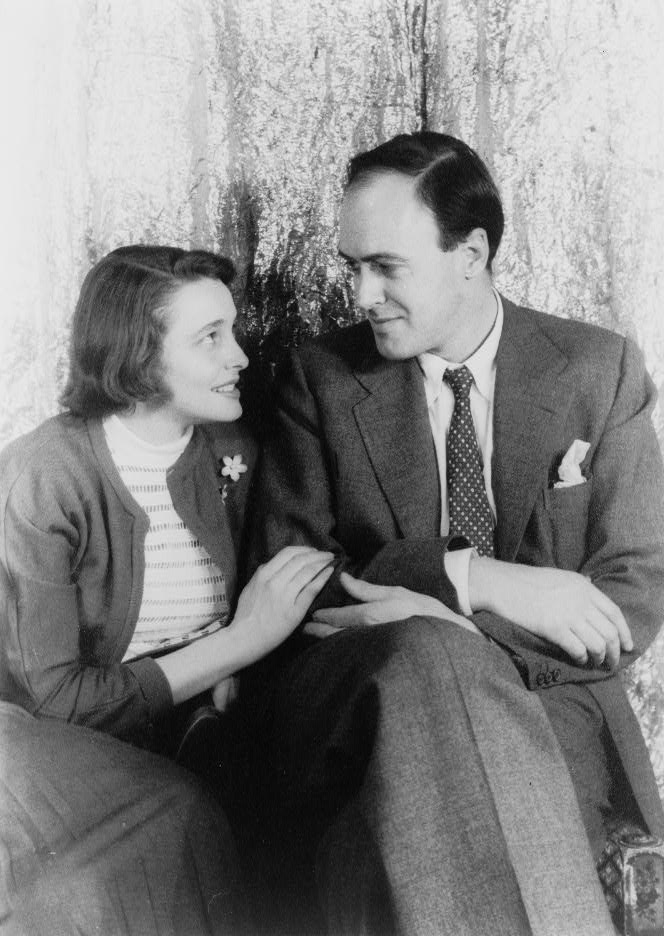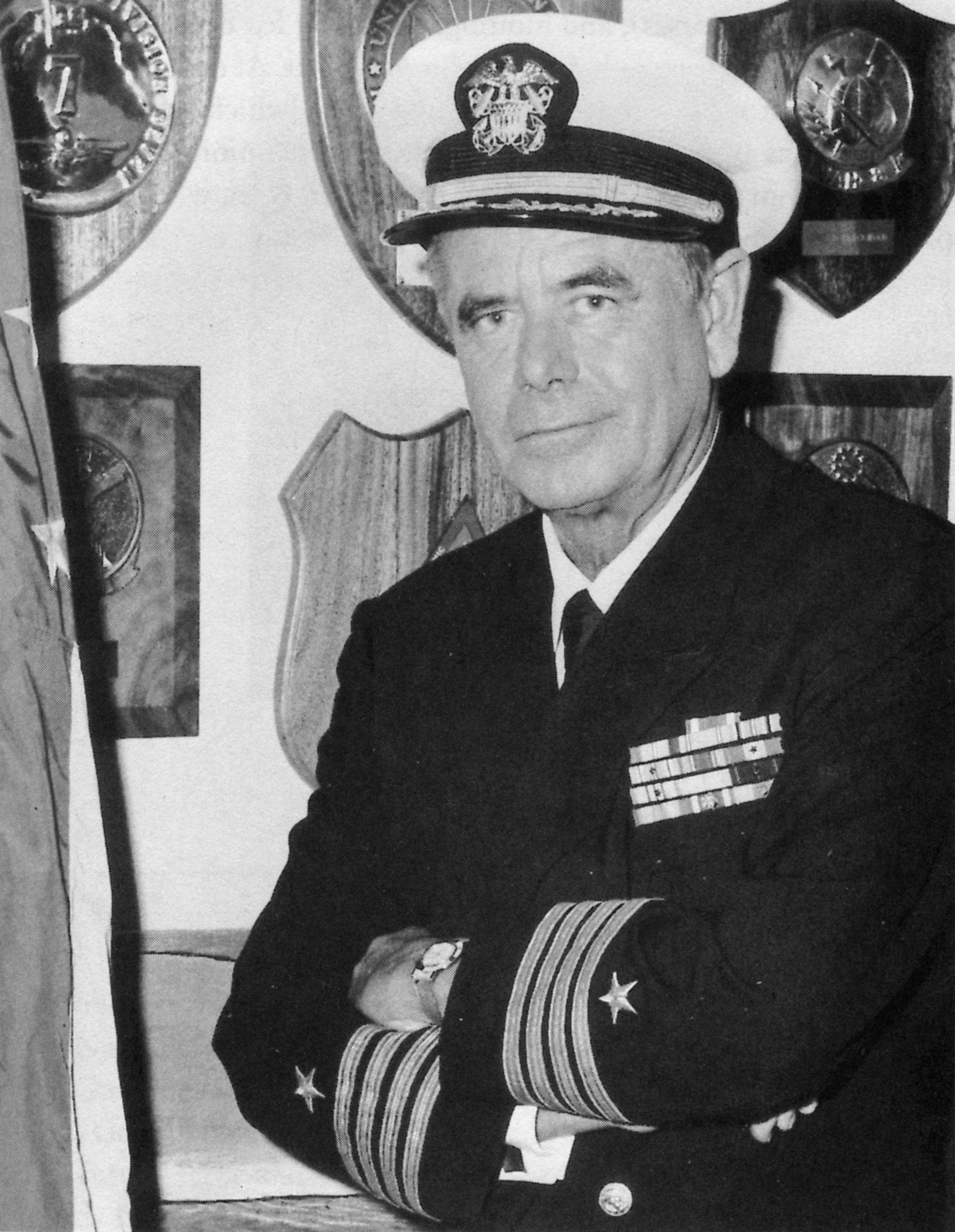|
Edith Evanson
Edith Evanson ( ''Carlson''; April 29, 1896 – November 29, 1980) was an American character actress of film, stage and television during the Golden Age of Hollywood. Life and career She was born Edith Carlson in Tacoma, Washington."Coincidence." ''Pittsburgh Post-Gazette.'' November 3, 1949. Her first job was as a court reporter in Bellingham. On March 15, 1923, she married Morris Otto Evanson (1893-1975). The couple had no children. Her first film role came in ''The Man Who Wouldn't Talk'' (1940) in an uncredited role. In the 1940s she was in supporting roles mostly as a maid, a busybody, landladies, or middle-aged secretaries. Some of her other film roles include parts in ''Citizen Kane'' (1941), ''Blossoms in the Dust'' (1941), ''Woman of the Year'' (1942), ''Reunion in France'' (1942), '' The Strange Woman'' (1947), '' I Remember Mama'' (1948), ''Rope'' (1948), '' The Damned Don't Cry'' (1950), ''The Day the Earth Stood Still'' (1951) and Disney's '' Toby Tyler'' (1960) ... [...More Info...] [...Related Items...] OR: [Wikipedia] [Google] [Baidu] |
Rope (film)
''Rope'' is a 1948 American Psychological thriller, psychological Crime film, crime thriller film directed by Alfred Hitchcock, based on the Rope (play), 1929 play of the same title by Patrick Hamilton (dramatist), Patrick Hamilton. The film was adapted by Hume Cronyn with a screenplay by Arthur Laurents.''Rope Unleashed – Making Of'' (2000) – documentary on the Universal Pictures, Universal Studios DVD of the film. The film was produced by Hitchcock and Sidney Bernstein, Baron Bernstein, Sidney Bernstein as the first of their Transatlantic Pictures productions. Starring James Stewart, John Dall and Farley Granger, this is the first of Hitchcock's Technicolor films, and is notable for taking place in real time (media), real time and being edited so as to appear as four long shots through the use of stitched-together long takes. It is the second of Hitchcock's "limited setting" films, the first being ''Lifeboat (1944 film), Lifeboat'' (1944). The original play was said to be ... [...More Info...] [...Related Items...] OR: [Wikipedia] [Google] [Baidu] |
Walter Pidgeon
Walter Davis Pidgeon (September 23, 1897 – September 25, 1984) was a Canadian-American actor. A major leading man during the Golden Age of Hollywood, known for his "portrayals of men who prove both sturdy and wise," Pidgeon earned two Academy Awards, Academy Award nominations for Academy Award for Best Actor, Best Actor, for his roles in ''Mrs. Miniver'' (1942) and ''Madame Curie (film), Madame Curie'' (1943). Pidgeon also starred in many other notable films, such as ''How Green Was My Valley (film), How Green Was My Valley'' (1941), ''The Bad and the Beautiful'' (1952), ''Forbidden Planet'' (1956), ''Executive Suite'' (1954), ''Voyage to the Bottom of the Sea'' (1961), ''Advise & Consent'' (1962), ''Funny Girl (film), Funny Girl'' (1968), and ''Harry in Your Pocket'' (1973). Aside from his acting career, Pidgeon served as the 10th President of the Screen Actors Guild, between 1952 and 1957. He received the Guild's Screen Actors Guild Life Achievement Award, Life Achievement A ... [...More Info...] [...Related Items...] OR: [Wikipedia] [Google] [Baidu] |
The Loretta Young Show
''The Loretta Young Show'' (originally known as ''Letter to Loretta'') is an American anthology drama television series broadcast on Sunday nights from September 2, 1953, to June 4, 1961, on NBC for a total of 165 episodes. The series was hosted by actress Loretta Young, who also played the lead in various episodes. Series overview ''The Loretta Young Show'' was sponsored by Procter & Gamble for its first six seasons, from 1953 to 1959. After a dispute with her sponsor, Young found other sponsors to sustain her program: The Toni Company (1959–1961), Philip Morris (1959–60), and Warner-Lambert's Listerine (1960–61). The program began with the premise that each drama was an answer to a question asked in her fan mail; the program's original title was ''Letter to Loretta''. The title was changed to ''The Loretta Young Show'' during the first season (as of February 14, 1954), and the "letter" concept was dropped altogether at the end of the second season. At this time, Youn ... [...More Info...] [...Related Items...] OR: [Wikipedia] [Google] [Baidu] |
You Are There (series)
''You Are There'' is a 1947–57 American historical educational television and radio series broadcast over the CBS Radio and CBS Television networks. Radio Created by Goodman Ace for CBS Radio, the original radio version of the series portrayed an entire network newsroom on a figurative time warp each week reporting the great events of the past. Reporters included John Charles Daly, Don Hollenbeck, and Richard C. Hottelet. The series was first heard on July 7, 1947, under the title ''CBS Is There''. Its final broadcast was on March 19, 1950, under the title ''You Are There''. According to author/historian Martin Grams, actor Canada Lee was a guest in episodes 32 and 60. Martin Gabel appeared in character in episode 82. The first 23 broadcasts went under the title ''CBS Is There'' and beginning with episode 24, the title changed to ''You Are There''. A total of 90 episodes were broadcast. Only 75 episodes are known to exist in recorded form. Television The radio progra ... [...More Info...] [...Related Items...] OR: [Wikipedia] [Google] [Baidu] |
Television
Television (TV) is a telecommunication medium for transmitting moving images and sound. Additionally, the term can refer to a physical television set rather than the medium of transmission. Television is a mass medium for advertising, entertainment, news, and sports. The medium is capable of more than "radio broadcasting", which refers to an audio signal sent to radio receivers. Television became available in crude experimental forms in the 1920s, but only after several years of further development was the new technology marketed to consumers. After World War II, an improved form of black-and-white television broadcasting became popular in the United Kingdom and the United States, and television sets became commonplace in homes, businesses, and institutions. During the 1950s, television was the primary medium for influencing public opinion.Diggs-Brown, Barbara (2011''Strategic Public Relations: Audience Focused Practice''p. 48 In the mid-1960s, color broadcasting was ... [...More Info...] [...Related Items...] OR: [Wikipedia] [Google] [Baidu] |
Hedy Lamarr
Hedy Lamarr (; born Hedwig Eva Maria Kiesler; November 9, 1914 January 19, 2000) was an Austrian-born American actress and inventor. After a brief early film career in Czechoslovakia, including the controversial erotic romantic drama '' Ecstasy'' (1933), she fled from her first husband, Friedrich Mandl, and secretly moved to Paris. Traveling to London, she met Louis B. Mayer, who offered her a film contract in Hollywood. Lamarr became a film star with her performance in the romantic drama ''Algiers'' (1938). She achieved further success with the Western '' Boom Town'' (1940) and the drama '' White Cargo'' (1942). Lamarr's most successful film was the religious epic '' Samson and Delilah'' (1949). She also acted on television before the release of her final film in 1958. She was honored with a star on the Hollywood Walk of Fame in 1960. At the beginning of World War II, along with George Antheil, Lamarr co-invented a radio guidance system for Allied torpedoes that used spr ... [...More Info...] [...Related Items...] OR: [Wikipedia] [Google] [Baidu] |
Katharine Hepburn
Katharine Houghton Hepburn (May 12, 1907 – June 29, 2003) was an American actress whose Katharine Hepburn on screen and stage, career as a Golden Age of Hollywood, Hollywood leading lady spanned six decades. She was known for her headstrong independence, spirited personality, and outspokenness, cultivating a screen persona that matched this public image, and regularly playing strong-willed, sophisticated women. She worked in a varied range of genres, from screwball comedy to literary drama, which earned her List of awards and nominations received by Katharine Hepburn, various accolades, including four Academy Awards for Academy Award for Best Actress, Best Actress—a List of Academy Award records#Acting records, record for any performer. Raised in Connecticut by wealthy, Progressive Era, progressive parents, Hepburn began to act while at Bryn Mawr College. Favorable reviews of her work on Broadway theatre, Broadway brought her to the attention of Hollywood. Her early years i ... [...More Info...] [...Related Items...] OR: [Wikipedia] [Google] [Baidu] |
Spencer Tracy
Spencer Bonaventure Tracy (April 5, 1900 – June 10, 1967) was an American actor. He was known for his natural performing style and versatility. One of the major stars of Classical Hollywood cinema, Hollywood's Golden Age, Tracy was the first actor to win two consecutive Academy Awards for Academy Award for Best Actor, Best Actor, from nine nominations. During his career, he appeared in 75 films and developed a reputation among his peers as one of the screen's greatest actors. In 1999, the American Film Institute ranked Tracy as the 9th greatest AFI's 100 Years...100 Stars, male star of Classical Hollywood cinema, Classic Hollywood Cinema. Tracy first discovered his talent for acting while attending Ripon College (Wisconsin), Ripon College, and he later received a scholarship for the American Academy of Dramatic Arts. He spent seven years in the theater, working in a succession of Repertory theatre, stock companies and intermittently on Broadway theatre, Broadway. His bre ... [...More Info...] [...Related Items...] OR: [Wikipedia] [Google] [Baidu] |
Irene Dunne
Irene Dunne (born Irene Marie Dunn; December 20, 1898 – September 4, 1990) was an American actress who appeared in films during Classical Hollywood cinema, the Golden Age of Hollywood. She is best known for her comedic roles, though she performed in films of other genres. After her father died when she was 14, Dunne's family relocated from Kentucky to Indiana. She was determined to become an opera singer, but when she was rejected by Metropolitan Opera, The Met, she performed in musicals on Broadway theatre, Broadway until she was scouted by RKO and made her Hollywood film debut in the musical ''Leathernecking'' (1930). She later starred in the successful musical ''Show Boat (1936 film), Show Boat'' (1936). Dunne starred in 42 movies and was nominated five times for the Academy Award for Best Actress—for her performances in the western drama ''Cimarron (1931 film), Cimarron'' (1931), the screwball comedies ''Theodora Goes Wild'' (1936) and ''The Awful Truth'' (1937), ... [...More Info...] [...Related Items...] OR: [Wikipedia] [Google] [Baidu] |
James Stewart
James Maitland Stewart (May 20, 1908 – July 2, 1997) was an American actor and military aviator. Known for his distinctive drawl and everyman screen persona, Stewart's film career spanned 80 films from 1935 to 1991. With the strong morality he portrayed both on and off the screen, he epitomized the " American ideal" in the mid-twentieth century. In 1999, the American Film Institute (AFI) ranked him third on its list of the greatest American male actors. He received numerous honors including the AFI Life Achievement Award in 1980, the Kennedy Center Honor in 1983, as well as the Academy Honorary Award and Presidential Medal of Freedom, both in 1985. Born and raised in Indiana, Pennsylvania, Stewart started acting while at Princeton University. After graduating, he began a career as a stage actor making his Broadway debut in the play '' Carry Nation'' (1932). He landed his first supporting role in '' The Murder Man'' (1935) and had his breakthrough in Frank Capra's en ... [...More Info...] [...Related Items...] OR: [Wikipedia] [Google] [Baidu] |
Patricia Neal
Patricia Neal (born Patsy Louise Neal; January 20, 1926 – August 8, 2010) was an American actress of stage and screen. She is well known for, among other roles, playing World WarII widow Helen Benson in ''The Day the Earth Stood Still'' (1951), radio journalist Marcia Jeffries in '' A Face in the Crowd'' (1957), wealthy matron Emily Eustace Failenson in '' Breakfast at Tiffany's'' (1961), and the worn-out housekeeper Alma Brown in '' Hud'' (1963) (for which she won the Academy Award for Best Actress). She also featured as the matriarch in the television film ''The Homecoming: A Christmas Story'' (1971); her role as Olivia Walton was re-cast for the series it inspired, ''The Waltons''. A major star of the 1950s and 1960s, she was the recipient of an Academy Award, a Golden Globe Award, a Tony Award, and two British Academy Film Awards, and was nominated for three Primetime Emmy Awards. Early life and education Neal was born in Packard, Whitley County, Kentucky, to William Bur ... [...More Info...] [...Related Items...] OR: [Wikipedia] [Google] [Baidu] |
Glenn Ford
Gwyllyn Samuel Newton Ford (May 1, 1916 – August 30, 2006), known as Glenn Ford, was a Canadian-born American actor. He was most prominent during Classical Hollywood cinema, Hollywood's Golden Age as one of the biggest box-office draws of the 1940s, 1950s, and 1960s, and had a career that lasted more than 50 years. Ford often portrayed ordinary men in unusual circumstances. Although he starred in many genres of film, some of his most significant roles were in the film noir, films noir ''Gilda (film), Gilda'' (1946) and ''The Big Heat'' (1953), and the high-school drama ''Blackboard Jungle'' (1955). For comedies and Westerns, though, he received acting laurels, including three Golden Globe Award nominations for Golden Globe Award for Best Actor – Motion Picture Musical or Comedy, Best Actor – Motion Picture Musical or Comedy, winning for ''Pocketful of Miracles'' (1961). He also played a supporting role as Superman's mild-mannered alter ego Clark Kent's adoptive farmer fa ... [...More Info...] [...Related Items...] OR: [Wikipedia] [Google] [Baidu] |










